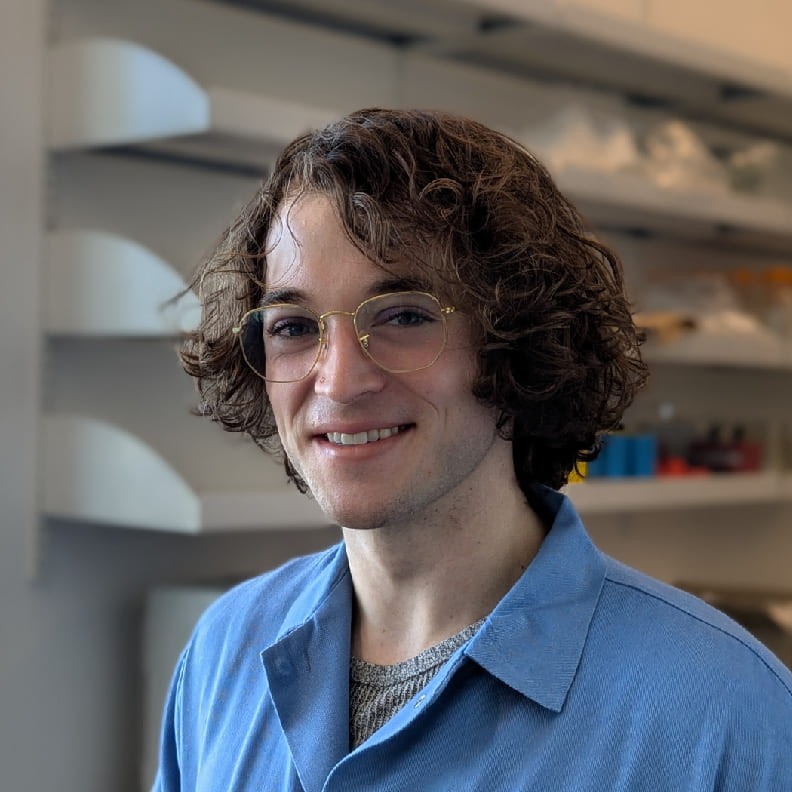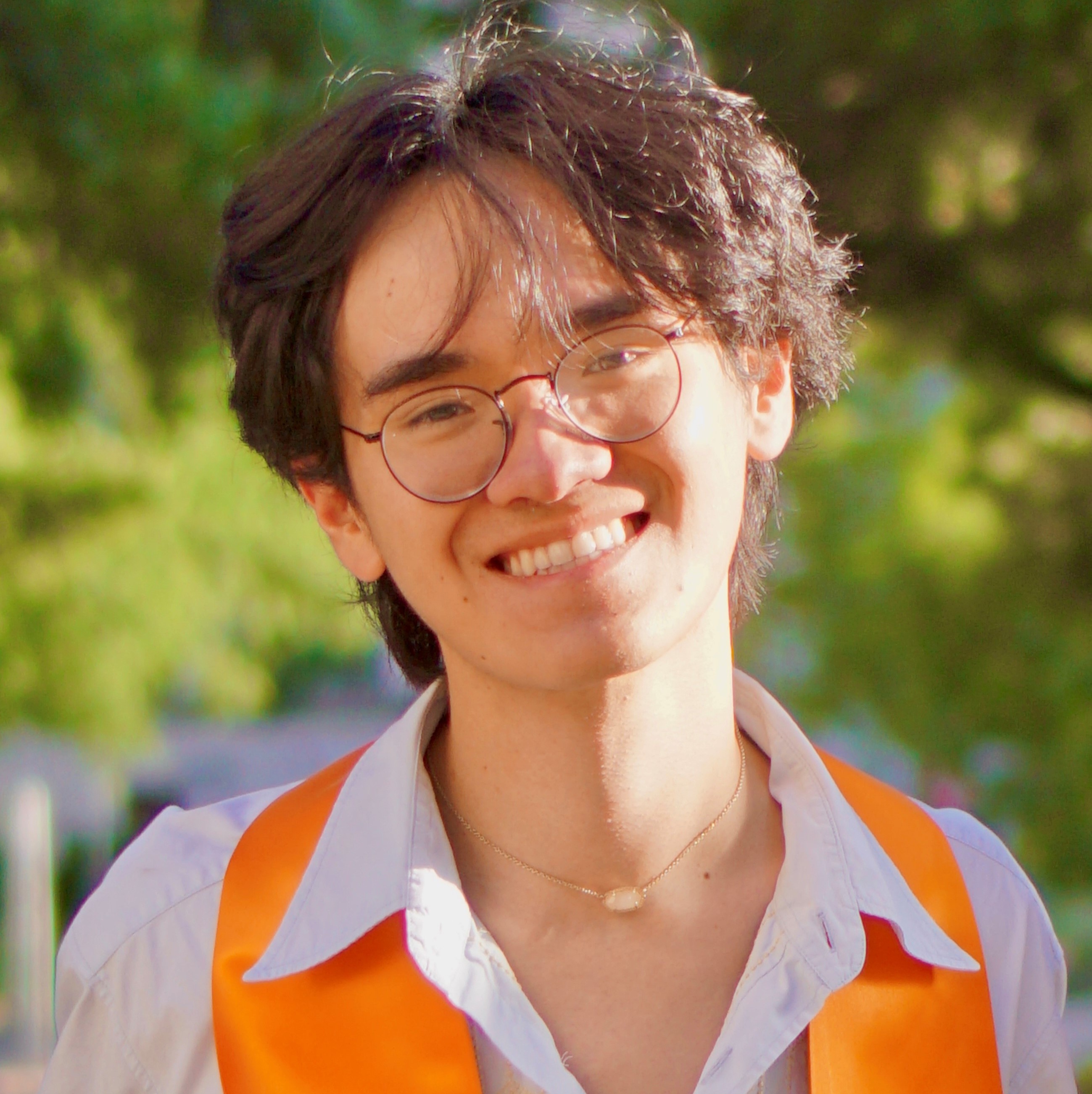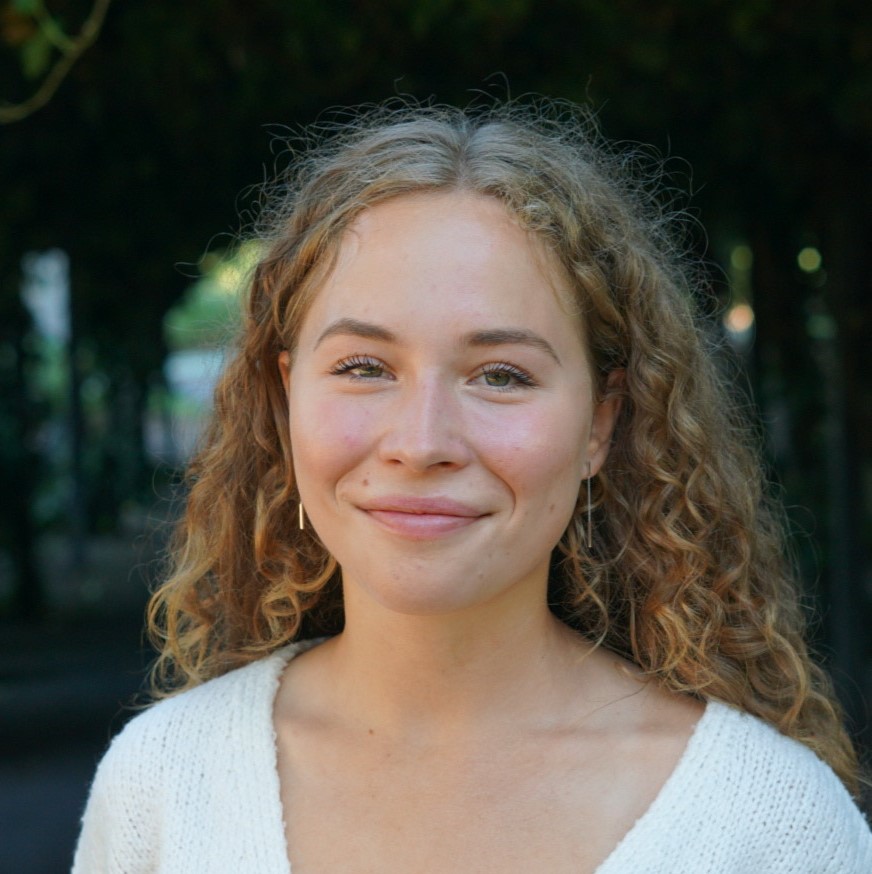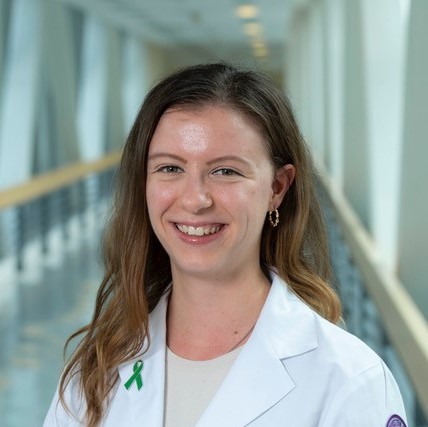Current Trainees

Xav Bower
Grad Program: ChBE
PhD Adviser: Julius Lucks

Ethan Cisneros
Grad Program: BME
PhD Adviser: Lisa Volpatti
Doctoral Research Project: Nanotechnology has revolutionized drug delivery due to facile controlled release, ability to protect therapeutics from degradation, and exceptional targeting. In field of immunology, delivery vehicles such as liposomes and lipid nanoparticles (LNPs) have been leveraged for cancer treatment and vaccination. LNPs have set a gold standard with the SARS-CoV-2 mRNA vaccine and its immunostimulatory properties. One of the most integral components of LNPs are PEG-lipids which dictate particle parameters including size distribution and in vivo circulation. However, PEG-lipids can undergo a phenomenon during systemic circulation known as “shedding” by which desorption from the particle occurs and has been linked to differential biodistribution. Therefore, there is great interest to investigate more targeted approaches to address these issues in future immunotherapies. Synthetic polymersomes offer a promising alternative since they are highly stable vesicular structures which can decouple the effects of particle stability from shedding. However, there are still many gaps in knowledge with respect to this phenomenon since PEG-lipid shedding has not been studied in the context of targeting. My project aims to develop a fundamental, mechanistic understanding by using a library of lipids with varying chemistries as it relates to T-lymphocyte targeting.

Lariana Cline
Grad Program: BME
PhD Adviser: Neha Kamat
Doctoral Research Project: Bispecific monoclonal antibodies (BiMAbs) are a promising approach to treat a range of diseases, offering an alternative to traditional genetic engineering techniques (i.e. CAR T cells). Unlike conventional monoclonal antibodies that target a single antigen, BiMAbs are engineered to bind two distinct targets simultaneously: one on the surface of diseased cells and another on immune cell receptors. This dual targeting mechanism triggers a localized and potent immune response against diseased cells, enhancing the specificity and efficacy of treatment. However, BiMAbs face challenges including poor pharmacokinetics and expensive manufacturing processes. These challenges limit the ability to explore diverse antibody combinations and target specific cell types effectively. My project seeks to address these limitations by employing a liposome platform to display various targeting ligands for Natural Killer (NK) cell engagement. NK cells are a key component of the innate immune response, and can be activated to recognize and eliminate cancer cells. In the Kamat lab, I am conjugating cell-free expressed nanobodies to liposomes in order to activate NK cells and target breast cancer cells.

Anna Kolesov
Grad Program: BME
PhD Adviser: Colin Hisey
Doctoral Research Project: Glioblastoma (GBM) is an aggressive brain cancer with a dismal 6.9% five-year survival rate, primarily due to frequent GBM cell migration, leading to secondary tumor formation in the brain. Migrasomes, a recently discovered type of matrix-bound extracellular vesicle (EV), may influence this malignant cell migration. As cells migrate, migrasomes are formed at the intersections and tips of the retraction fibers which are left in trails in their wake. Trailing cells can then internalize these “breadcrumbs,” originally deposited by the leading cells, through an unclear and understudied process. This form of intercellular communication suggests that migrasomes could play a significant role in modulating tumor cell migration and other important processes within the microenvironment. However, inefficiencies in migrasome isolation, characterization, and in vitro biomimicry have hindered researchers in fully understanding their impact on disease progression and their potential as therapeutics. My project aims to optimize both migrasome isolation and a micropatterning technology to develop a high-throughput platform for studying GBM cell migration in response to migrasomes.

Stephie Lux
Grad Program: MSTP
PhD Adviser: Shad Thaxton
Doctoral Research Project: Over half a million people in the United States suffer from End Stage Renal Disease, which is best treated by kidney transplantation. However, an inherent challenge of organ transplantation is ischemia-reperfusion injury (IRI). IRI causes a burst of cellular inflammation and membrane lipid peroxidation that culminate in iron-dependent cell death, better known as ferroptosis. Ferroptosis en masse can ultimately lead to transplant failure, and thus, targeted treatments that mitigate ferroptosis are needed. The Thaxton Lab specializes in synthesizing non-toxic, biomimetic high density lipoprotein nanoparticles (HDL NPs) which can be used for targeted delivery of small molecules. For example, potent antioxidants and peptides with anti-ferroptotic properties can be encompassed within the HDL NP. Through my research, I intend to optimize an HDL NP that can successfully prevent ferroptosis and IRI in the setting of kidney transplant.

Olivia Parson
Grad Program: IBiS
PhD Adviser: Chad Mirkin
Doctoral Research Project: HBV is a vaccine-preventable disease that is transmitted through contact with bodily fluids. Many infected with HBV develop an acute infection that their body is capable of clearing within six months, but approximately 5-10% of adults infected with HBV will develop a progressed form of the disease known as Chronic Hepatitis B (CHB). Those with CHB are at an increased risk for developing liver cancers such as hepatocellular carcinoma, and they often suffer from other conditions related to liver fibrosis. Despite the efficacy of the HBV vaccine leading to a reduction in cases, there is still a large public health burden caused by HBV, with CHB being the cause of 1.1 million deaths in 2022. Current approaches for HBV treatment aim to achieve a “functional cure”, defined by the lack of detectable viral components in the blood. While this is akin to a clearance of the Hepatitis B infection, the existing pool of viral DNA remains in host cells and can cause later resurgences of HBV and the treatments leave patients reliant on lifelong treatments. Elimination of viral DNA in the host cells would destabilize the template by which infectious particles are produced, allowing for a “complete cure” for HBV, although this approach has not be clinically successful to date due to low efficacy of genome targeting treatments and the possibility for re-infection from remaining viral reservoirs in the body. My work will utilize the modularity of the Spherical Nucleic Acid (SNA) platform to address the current shortcomings in HBV treatment strategies using a CRISPR-Cas9 strategy. The SNA is an ideal carrier for CRISPR components due to its high cellular uptake, and modifying the oligonucleotide shell of the SNA can increase its immunostimulatory properties to increase antiviral immune activity. This will allow for a treatment that uses CRISPR-Cas9 to eliminate viral genome elements to prevent further production of infectious particles and simultaneously stimulates the immune system to clear any infectious particles circulating in the body. Within this project I hope to address the current shortcomings in HBV treatment and utilize the SNA platform for innovative antiviral treatments.

Gillian Primavera
Grad Program: BME
PhD Adviser: Yogesh Goyal

Lauren Redus
Grad Program: ChBE
PhD Adviser: Josh Leonard

Mary Skillicorn
Grad Program: ChBE
PhD Adviser: Krishna Shrinivas
Doctoral Research Project: Intracellular biological material, like proteins and nucleic acids, is densely packed within a cell. In order to maintain organized cellular processes, this material is compartmentalized into membraneless organelles known as biomolecular condensates. A type of condensate in the interchromatin space of cells, called paraspeckles, sequester RNA and splicing proteins to participate in regulating gene transcription. Dysregulation of paraspeckles formation or internal components are seen to be involved in diseases like Amyotrophic Lateral Sclerosis (ALS) and cancer. My research uses computational tools, such as molecular dynamics, to understand how paraspeckles form and how their core-and-shell organization influences gene transcription. By understanding the out-of-equilibrium dynamics that organize paraspeckles, scientists can better understand the role of biomolecular condensates in cellular function and identify when dysregulation of condensates causes diseases to onset. Additionally, by contributing to understanding of paraspeckles, I aim to advance scientists' ability to engineer the spatial organization in cells for more specific cellular outcomes and effective therapeutic results.

Pris Wasuwanich
Grad Program: ChBE
PhD Adviser: Danielle Tullman-Ercek
